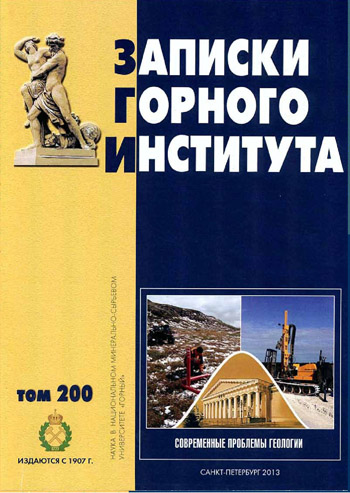Difference in galvanic and inductive methods' results, new examples for DIP and BIEP
About authors
- 1 — Ph.D., Dr.Sci. professor Moscow State University
- 2 — Ph.D. associate professor Moscow State University
- 3 — Ph.D., Dr.Sci. professor Moscow State University
- 4 — master, post-graduate student Moscow State University
Abstract
Difference in apparent resistivity values determined in galvanic and inductive electrical and electromagnetic methods depends on macroanisotropy of layered cross-section and decreased penetration depth of galvanic methods without changing penetration depth of inductive methods. Joint influence of these two factors in case of high contrast of layers' resistivities results in difference in several tens of apparent resistivity values.
Область исследования:
(Archived) Application of the modern electric exploratory technologies in prospecting of mineral deposits
Keywords:
dipole inductive profiling
non-contact measurements of electrical field
galvanic and inductive methods
transversal resistance
longitudinal conductance
References
- Vanyan L.L. Fundamentals of electromagnetic soundings. Moscow, 1965. 108 p.
- Karinsky A.D. Influence of rocks' electrical anisotropy on electromagnetic field in boreholes: Research Paper...Dr. phys. & math. / MGRI. Moscow, 2008. 32 p.
- Resistivity profiling with non-grounded working lines / Authors: A.S.Nakhabtcev, B.G.Sapognikov, A.I.Yabluchansky. Leningrad, 1985. 96 p.
- McNeil J.D. Technical Note TN-6. Electromagnetic terrain conductivity measurement at low induction numbers / Geonics Ltd. 1980. 13 p.
Similar articles
An assemblage of ilmenite, pyrophanite and pseudurutile in Severny granite (the Chukchi peninsula)
2013 E. V. Polyakova
Mineral and energy resources of Siberian platform and prospects of their development
2013 V. B. Archegov
